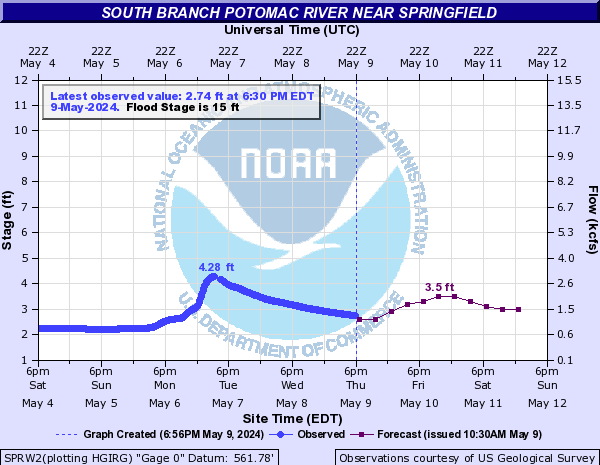The media is abuzz once again with stories about dying bees. According to a new
report from the USDA, scientists have been unable to pinpoint the cause of
colony collapse disorder (CCD),
the mysterious affliction causing honey bees to disappear from their
hives. Possible factors include parasites, viruses, and a form of
pesticide known as neonicotinoids. Whatever the cause, the results of a
recent beekeeper survey suggest that the problem is not going away. For
yet another year,
nearly one-third of US honey bee colonies did not make it through the winter.
Given
the variety of crops that rely on honey bees for pollination, the
colony collapse story is an important one. But if you were to rely on
media reports alone, you might believe that honey bees are in short
supply. NPR recently declared that we may have reached “
a crisis point for crops.” Others warned of an impending “
beepocalypse” or a “
beemageddon.”
In
a rush to identify the culprit of the disorder, many journalists have
made exaggerated claims about the impacts of CCD. Most have uncritically
accepted that continued bee losses would be a disaster for America’s
food supply. Others speculate about the coming of a second “silent
spring.” Worse yet, many depict beekeepers as passive, unimaginative
onlookers that stand idly by as their colonies vanish.
This
sensational reporting has confused rather than informed discussions over
CCD. Yes, honey bees are dying in above average numbers, and it is
important to uncover what’s causing the losses, but it hardly spells
disaster for bees or America’s food supply.
Consider the following facts about honey bees and CCD.
For starters,
US honey bee colony numbers are stable,
and they have been since before CCD hit the scene in 2006. In fact,
colony numbers were higher in 2010 than any year since 1999. How can
this be? Commercial beekeepers, far from being passive victims, have
actively rebuilt their colonies in response to increased mortality from
CCD. Although average winter mortality rates have increased from around
15% before 2006 to more than 30%, beekeepers have been able to adapt to
these changes and maintain colony numbers.

Source: USDA NASS Honey Production Report
Rebuilding
colonies is a routine part of modern beekeeping. The most common method
involves splitting healthy colonies into multiple hives. The new hives,
known as “
nucs,” require
a new queen bee, which can be purchased readily from commercial queen
breeders for about $15-$25 each. Many beekeepers split their hives late
in the year in anticipation of winter losses. The new hives quickly
produce a new brood and often replace
more bees than are lost over the winter.
Other methods of rebuilding colonies include buying packaged bees
(about $55 for 12,000 worker bees and a fertilized queen) or replacing
the queen to improve the health of the hive.
“The state of the
honey bee population—numbers, vitality, and economic output—are the
products of not just the impact of disease but also the economic
decisions made by beekeepers and farmers,” economists Randal Rucker and
Walter Thurman write in a
summary of their
working paper
on the impacts of CCD. Searching through a number of economic measures,
the researchers came to a surprising conclusion: CCD has had almost no
discernible economic impact.
But you don’t need to rely on their
study to see that CCD has had little economic effect. Data on colonies
and honey production are publicly
available from the USDA.
Like honey bee numbers, US honey production has shown no pattern of
decline since CCD was first detected. In 2010, honey production was 14%
greater than it was in 2006. (To be clear, US honey production and
colony numbers are lower today than they were 30 years ago, but as
Rucker and Thurman
explain, this gradual decline happened prior to 2006 and cannot be attributed to CCD).

Source: USDA NASS Honey Production Report
What
about the prices of queen bees and packaged bees? Because of higher
winter losses, beekeepers are forced to purchase more packaged queen and
worker bees to rebuild their lost hives. Yet even these
prices seem unaffected.
Commercial queen breeders are able to rear large numbers of queen bees
quickly, often in less than a month, putting little to no upward
pressure on bee prices following CCD.
And what about the prices
consumers pay for crops pollinated by honey bees? Are these skyrocketing
along with fears of the beepocalypse? Rucker and Thurman find that the
cost of CCD on almonds, one of the most important crops from a honey bee
pollinating perspective, is trivial. The implied increase in the shelf
price of a pound of Smokehouse Almonds is a mere 2.8 cents, and the
researchers consider that to be an upper-bound estimate of the impact on
fruits and vegetables.
There is, however, one measure that has
been significantly affected by CCD—and that’s the pollination fees
beekeepers charge almond producers. These fees have more than doubled in
recent years, though the fees began rising a few years before CCD was
reported. Rucker and Thurman attribute a portion of this increase to the
onset of CCD. But even this impact has a bright side: For many
beekeepers, the increase in almond pollination fees has more than offset
the costs they have incurred rebuilding their lost colonies.
Overcoming
CCD is not without its challenges, but beekeepers have thus far proven
themselves adept at navigating such changing conditions. Honey bees have
long been afflicted with a variety of diseases. The
Varroa mite,
a blood-thirsty bee parasite, has been a scourge of beekeepers since
the 1980s. While CCD has resulted in larger and more mysterious losses,
the resourcefulness of beekeepers remains.
Hannah Nordhaus, author of
The Beekeeper’s Lament,
warned that the scare stories evoked by CCD should serve as a
cautionary tale to environmental journalists. “By engaging in simplistic
and sometimes misleading environmental narratives—by exaggerating the
stakes and brushing over the inconvenient facts that stand in the way of
foregone conclusions—we do our field, and our subjects, a
disservice,” she wrote in her 2011 essay “
An Environmental Journalist’s Lament.”
“The
overblown response to CCD in the media stems from a failure to
appreciate the resilience of markets in accommodating shocks of various
sorts,” write Rucker and Thurman. The ability of beekeepers and other
market forces to adapt has kept food on the shelves, honey in the
cupboard, and honey bees buzzing. Properly understood, the story of CCD
is not one of doom and gloom, but one of the triumph and perseverance of
beekeepers.































